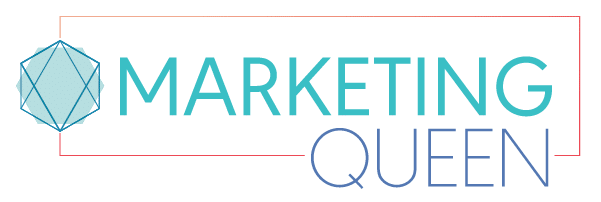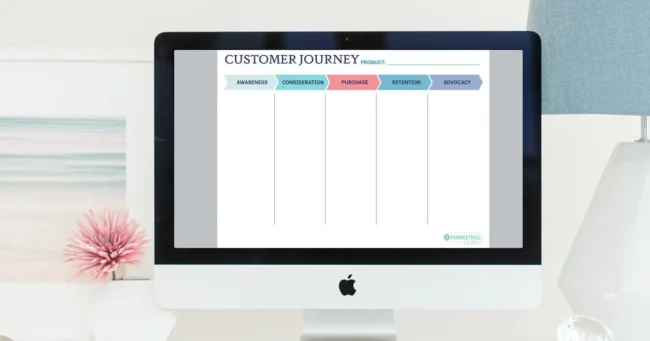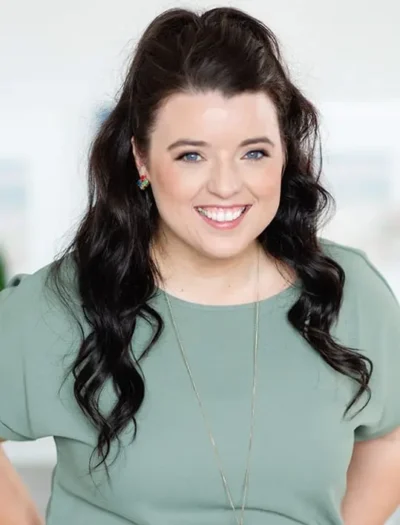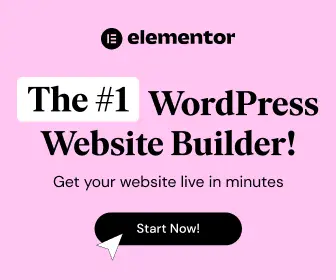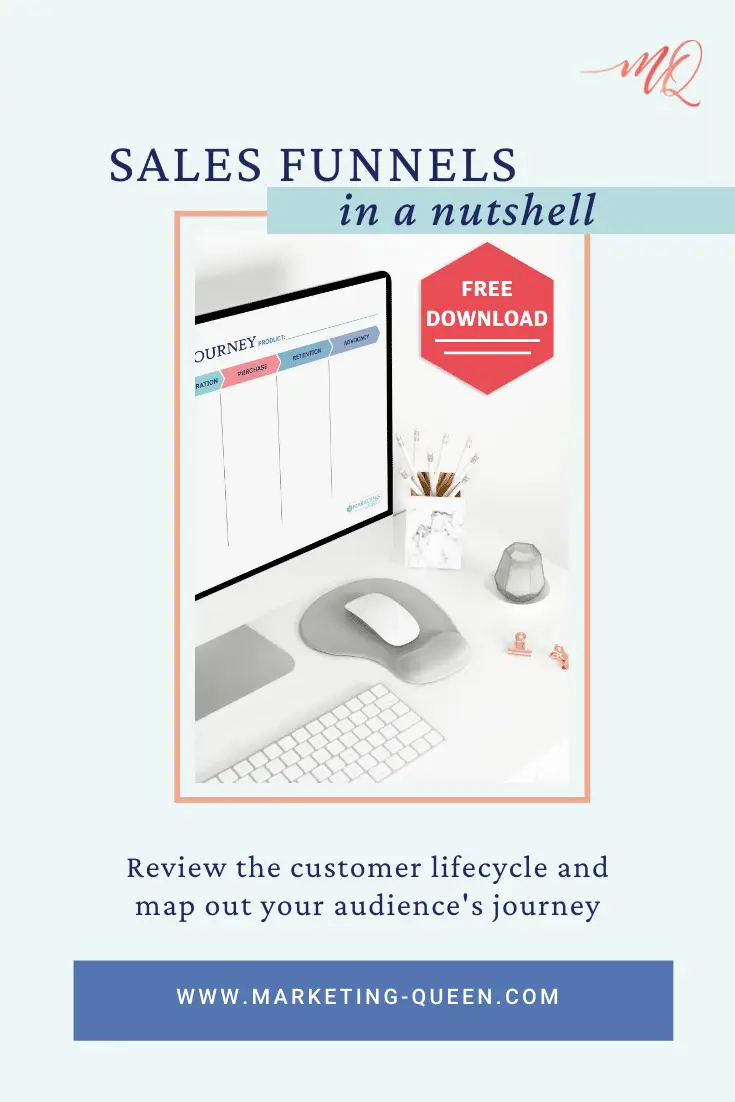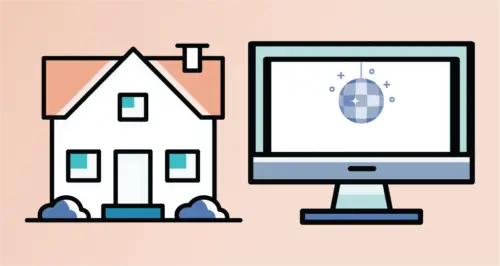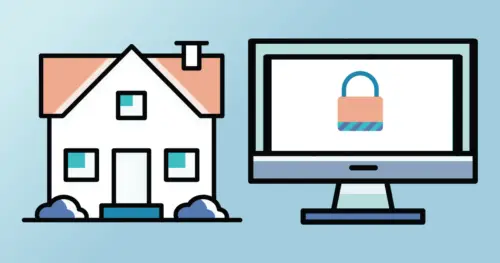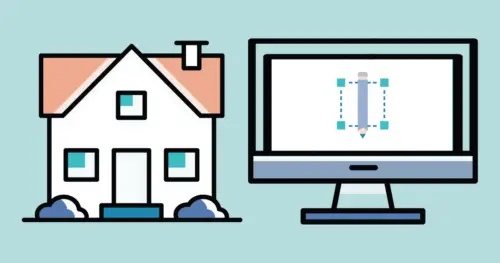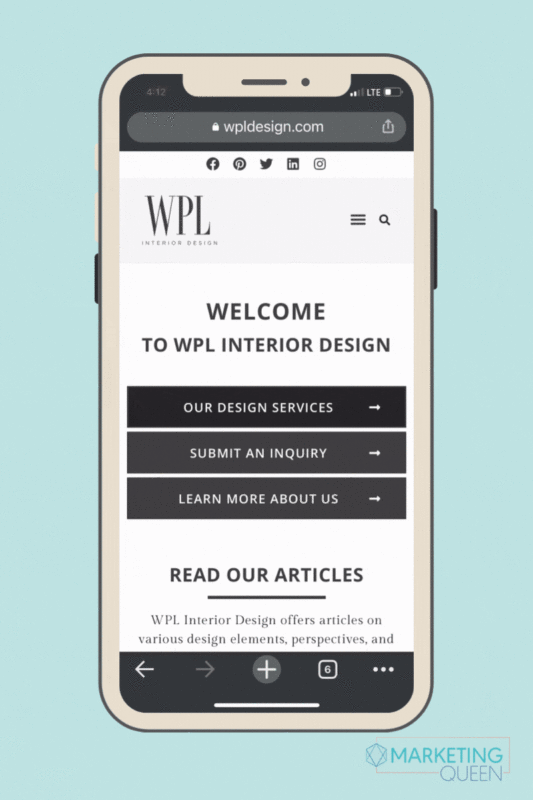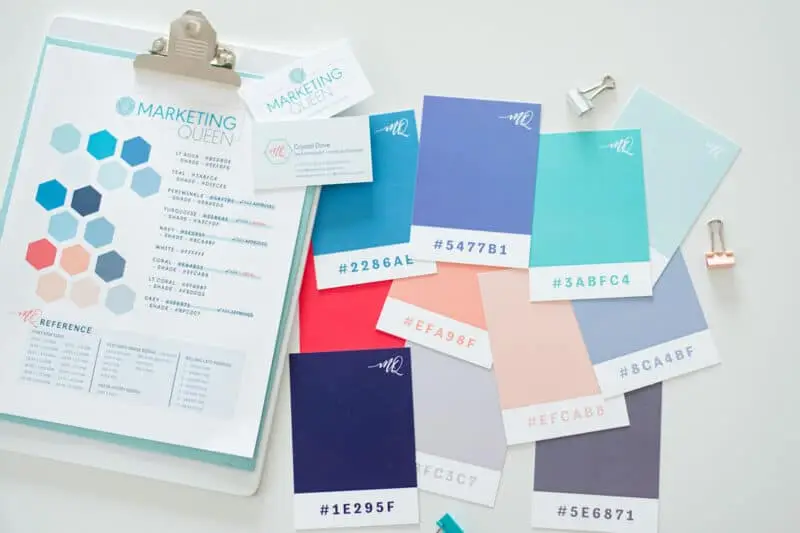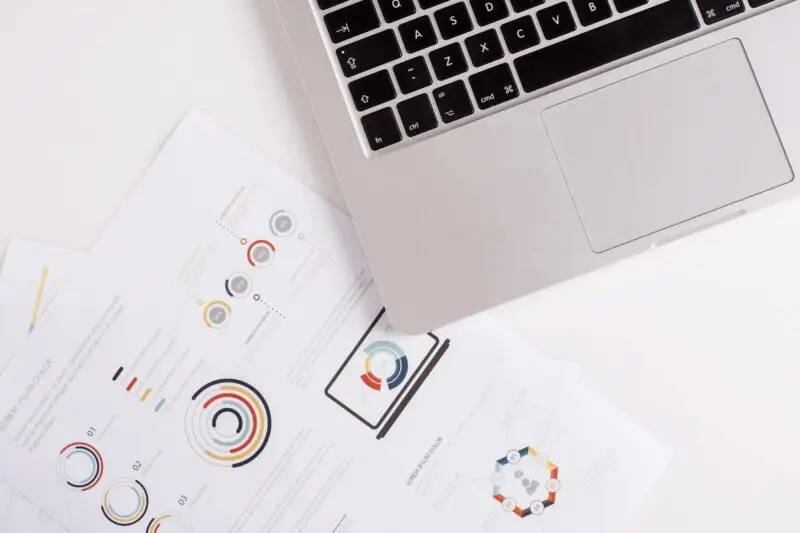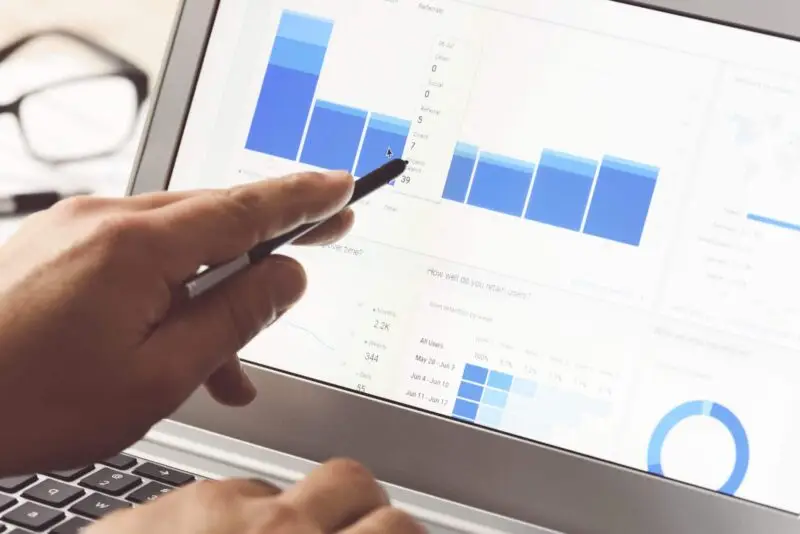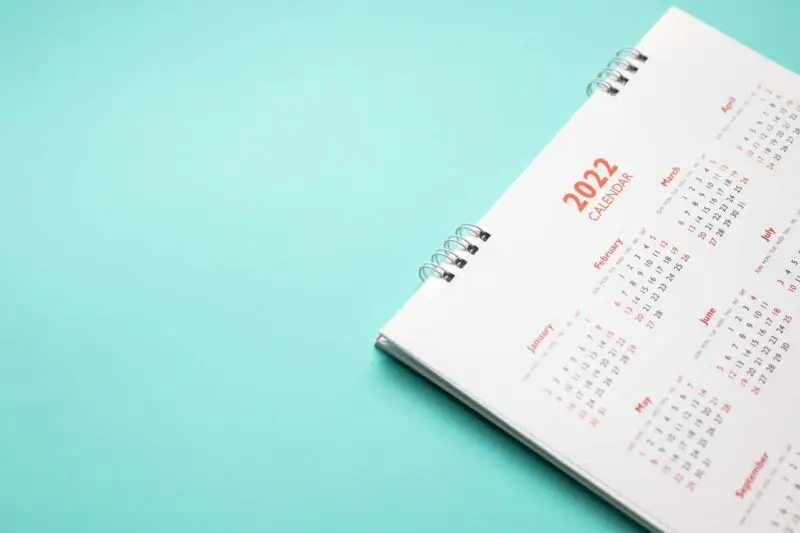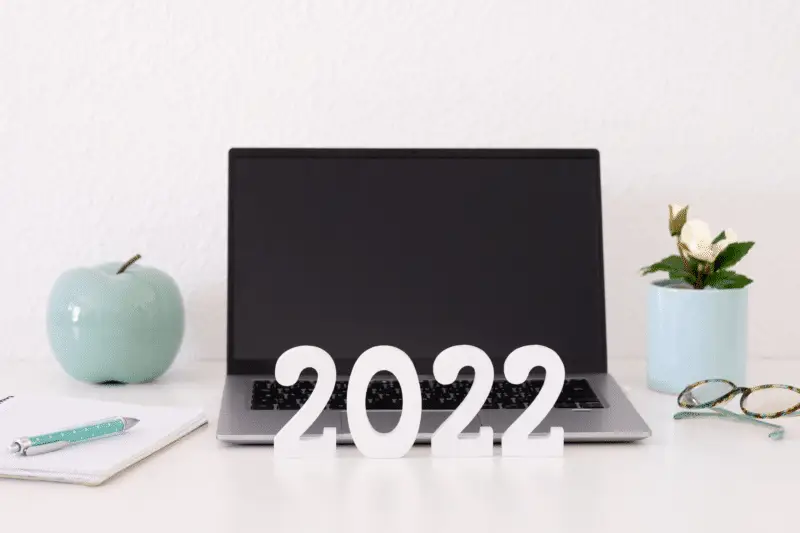Ah, the sales funnel. Some people call it a marketing funnel, or the customer lifecycle, but they all mean the same thing: the process by which a lead turns into your client or customer!
Getting from point A (lead) to point B (client) isn’t immediate. It is a process. And all processes can be optimized! If you optimize your sales funnel, you’ll get great clients. But even better is if they go on to become your brand advocates / superfans.
What Is a Sales Funnel (And Why Do They Call It That?)
In business, when a lead becomes a customer we call it a sales funnel because there are many leads out there…but not all of them will funnel down into being your customer or client.
That’s why the term ‘sales funnel’ has been used since the 19th century to describe this process. The top is wide to allow as many people as possible to get in. The funnel narrows as people drop out of the process.
Let’s use some example numbers to illustrate this. Say you initially attract 1,000 people, only 200 will become your customers. A 20% conversion rate is really darn good.
What’s even better is if they become your advocates – those super fans who can’t stop referring their friends to you. It’s safe to say maybe 25% of those 200 customers become your advocates.
That leaves you with 50 people who are doing your marketing for you!
We don’t know about you, but we love the sound of all that brand loyalty in the morning (and all day, really)! If we look closely at the sales funnel we can start to see opportunities to get even more leads to funnel down into becoming clients.
Drumroll, please…The 5 Phases of the Sales Funnel
We’ll cut to the chase. The five phases are:
- Awareness
- Consideration
- Purchase
- Retention
- Advocacy
Here at Marketing Queen, we assist our clients in mapping out every phase of their sales funnel. Why? Because becoming aware of all of those touchpoints is valuable. Especially because you can start to find places where you’re missing the chance for an additional touchpoint that would really seal the deal, so to speak.
Let’s look at each phase of this customer journey in detail.
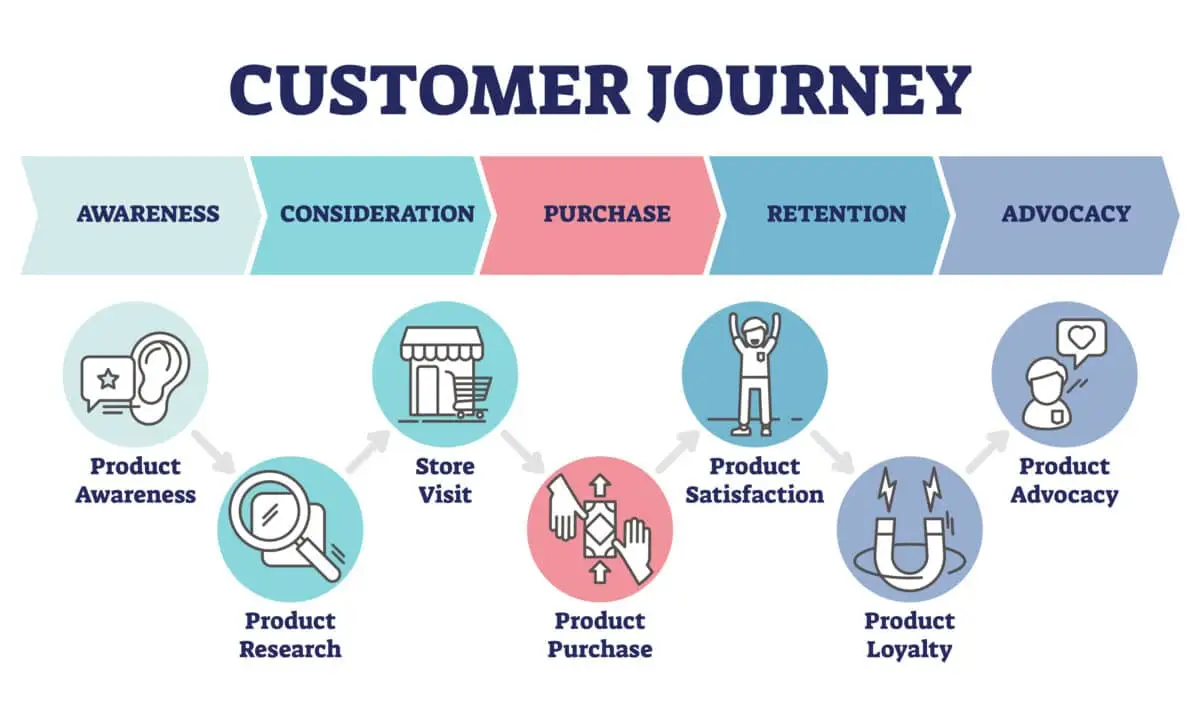
#1 The Awareness Phase of the Sales Funnel
The very top of the funnel is called the Awareness phase. All it takes is for someone to become aware of your business. Your mother probably taught you that first impressions were important. Well, she was right!
This is the widest part of the funnel where you’re getting the most eyeballs on your brand’s touchpoints. People become aware of you via social media outlets, websites, etc.
The Awareness phase is your first chance to give your audience the first impression of who you are – so make it a branded one! For example, you may want to make a welcome page specifically for people who find you through Facebook or Instagram. Your audience will feel charmed by your business as they move securely into your sales funnel.
Of course we don’t want people to get stuck there – we want to move them into the next phase: Consideration. This is where strategic calls-to-action come into play to invite your audience to learn more about you.
#2 The Consideration Phase of the Sales Funnel
This is where your audience considers whether or not they’re interested in your service or product. The Consideration phase can take many more cycles than the previous phase. (It may be helpful to know that the higher the price point, the more cycles it takes.)
During this phase, your audience is researching you by:
- Reading the copy on your website
- Combing through independent third-party reviews (Google, Facebook, The Knot, etc.)
- Asking their friends about you
So how do you know your audience is in the Consideration phase? They’re interacting with your brand. They’ve subscribed to your email newsletter and they’ve been reading it. They’re following you on social media and may even send you a note through your Contact form.
Again, having great calls-to-action is key. They should be incremental and easy to implement. Because next comes the exciting part: Purchase!
#3 The Purchase Phase of the Sales Funnel
Cha-ching! Did you hear that? It’s the sound of your audience/lead becoming your client/customer. Congratulations!
However, this is your first opportunity to make a huge mistake. And that mistake is: not having mapped out what happens next for your brand-new customer or client.
- For service-based businesses: this phase should include all of your onboarding, the execution of the service, and your offboarding.
- For product-based businesses: this phase includes communications like their emailed receipt, a thank you note, shipping communications, packaging, and any marketing materials contained in the package.
So you need to think through what happens after they buy.
- What happens throughout the entire service they’ve purchased from you?
- Where are the touchpoints?
A satisfied customer moves into the next stage of the sales funnel: Retention.
#4 The Retention Phase of the Sales Funnel
It’s so much easier to keep a client you already have than to attract a new one. So how do you keep them coming back for more?
What else might they be interested in buying from you? Can you put them into a different funnel for a different product or service?
If you’re a photographer, maybe you worked with a couple for their engagement and wedding photos. Down the line, they might need some family photos! You want to stay in touch with the couple so that when it’s time, you’re top of mind.
#5 The Advocacy Phase of the Sales Funnel
This is where you turn your customers into superfans! This phase is everlasting and can take on several different forms.
The key part here is to help your client know how to advocate for you. Ask them to write a public testimonial, get their permission to write a case study about them for their portfolio, or to refer their friends to you.
For you, this could mean sending a short online questionnaire to clients after your project together is finished. At the end of your questionnaire, include links to Facebook, Google, and Yelp to make it easy for them to write a public testimonial.
If your client submits feedback – great! But don’t stop there. You could put them into a special email marketing campaign to receive incentives for referring their friends to you. Just for example.
After this, you want to move your client into another funnel for a different product. Since they already know you, they’ll move more quickly through the Consideration and Purchase phases.
So really this funnel becomes more of a circle!
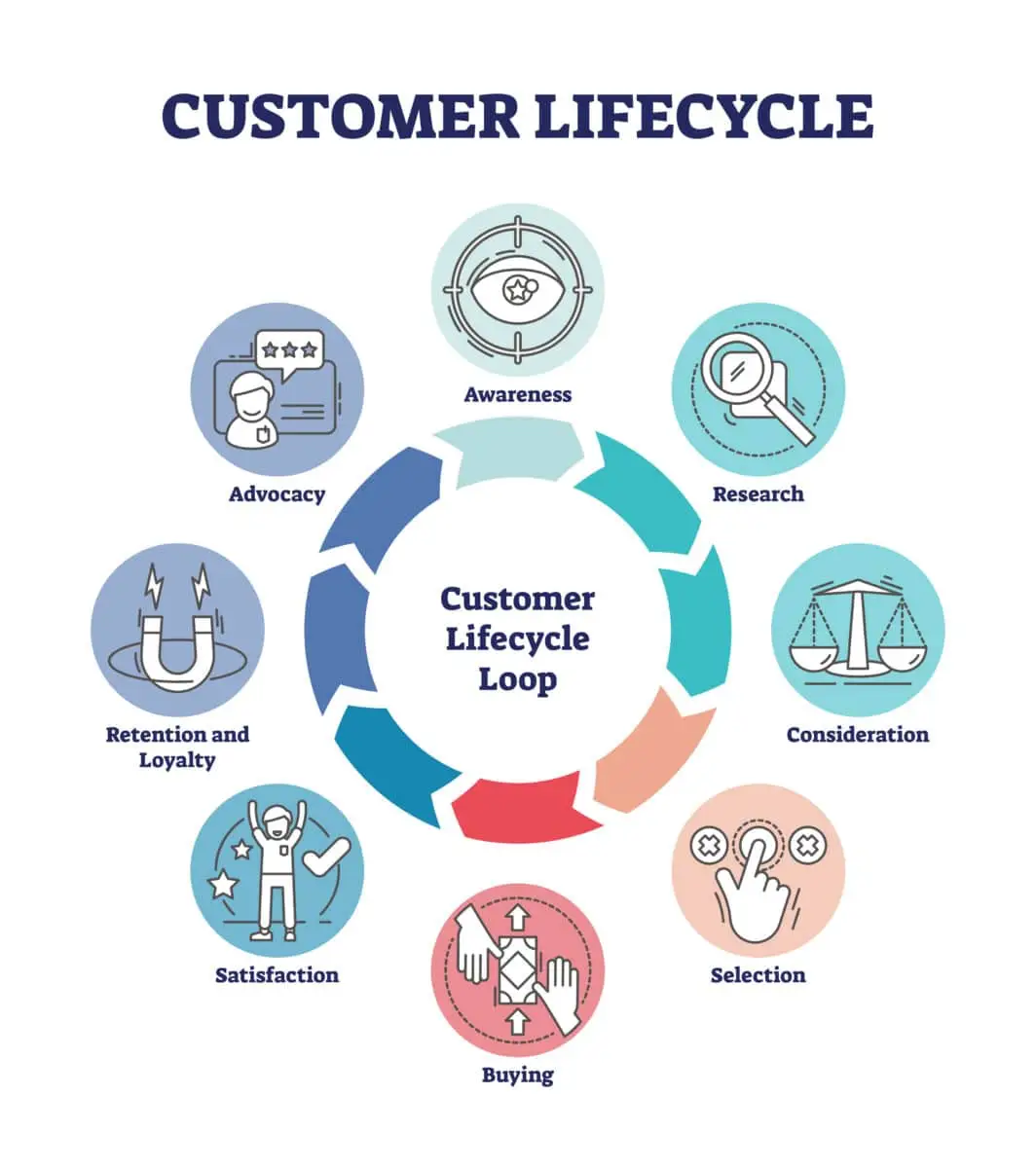
Go Forth and Funnel
To help you start to think more about your sales funnel, we created this free downloadable sales funnel worksheet for you to use! We recommend printing them on legal-sized paper so you have plenty of room to write your steps in each phase and brainstorm creative ways you can add more touchpoints.
Coming soon is another blog post about ways to improve conversion in your funnel so you get more sales!
Related: The #1 Thing That Can Make or Break Your Marketing Success
